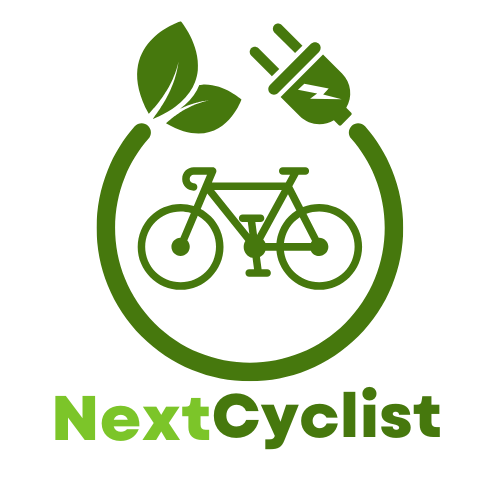A 36V 500W e-bike can reach speeds of 20 to 28 miles per hour (32 to 45 kilometers per hour). Factors like terrain, rider weight, and battery condition can affect this speed. For maximum performance, ensure the bike is well-maintained and the battery is fully charged.
Introduction
Are you curious about how fast a 36V 500W e-bike can go? If you’re like many riders, understanding your e-bike’s speed potential is essential for making the most of your rides. Whether you’re commuting to work or hitting the trails on the weekend, knowing what to expect from your electric bike can help you plan better and ride safer.
But here’s the catch: with so many factors influencing speed, such as terrain, rider weight, and assist levels, it can feel overwhelming. What if you could uncover the truth behind those numbers without sifting through endless data?
In this article, we’ll break down everything you need to know about the speed capabilities of a 36V 500W e-bike. You’ll discover real-world insights and practical tips that will empower you to make informed decisions. By the end, you’ll be equipped with all the knowledge to get the most out of your e-bike journey. So, let’s gear up and explore the speed potential together!
TL;DR
- A 36V 500W e-bike can reach speeds up to 28 mph under optimal conditions.
- The 36V battery boosts performance, enhancing acceleration and enabling tackling inclines.
- Terrain and rider weight significantly impact speed; flat surfaces increase speed, while uphill riding slows it down.
- Regular maintenance (e.g., cleaning chain, checking brakes) improves speed and performance.
- Maintain tire pressure between 35-50 psi to reduce drag and optimize speed.
- Adopting a more aerodynamic riding position can help you cut through wind resistance, boosting speed and reducing fatigue.
- Staying proactive with these adjustments ensures a smoother and more efficient ride.
Understanding E-Bike Speed Factors
When you’re curious about how fast a 36V 500W e-bike can go, it’s crucial to understand the factors that influence speed. These factors range from motor power to terrain, and they all play a significant role in your biking experience. Let’s break it down:
- Motor Power: The 500W motor is a big player in speed capabilities. Typically, you can hit speeds of up to 28 mph with this type of motor. That’s pretty fast for your average commuter e-bike and makes it ideal for zipping around town.
- Battery Voltage: The 36V battery system offers not only a boost in acceleration but also enhances overall performance. A higher voltage generally means more power available for riding, allowing you to tackle inclines and longer distances more effectively.
- Terrain and Weight: Speed can vary significantly based on the terrain and the weight of the rider. For instance, pedaling uphill will naturally slow you down, while riding on flat terrain can maximize your speed. Also, if you’re carrying a heavy load or if your height and weight are above average, expect a slight dip in speed.
To give you a clearer picture, here’s a simple comparison of how these factors might affect your ride:
| Factor | Impact on Speed |
|---|---|
| Motor Power | Up to 28 mph |
| Battery Voltage | Improves acceleration |
| Terrain (Flat vs. Hill) | Flat increases speed, hills decrease speed |
| Rider Weight | Heavier reduces speed |
By understanding these speed factors, you’ll be better equipped to choose the right e-bike setup for your needs and riding conditions. If you’re looking for more ways to enhance your bike maintenance skills, check out our detailed guide on e-bike maintenance tips and use our handy e-bike charge time calculator to better manage your rides!
Maximizing Your E-Bike’s Speed
Getting the most out of your e-bike’s speed is all about being proactive with its maintenance and making small adjustments. A well-maintained electric bike can easily reach impressive speeds. Here’s how to optimize yours.
Regular Maintenance: Keep Your E-Bike in Prime Condition for Optimal Speed
Regular maintenance is essential for ensuring your e-bike runs smoothly. Start by cleaning the chain and applying a suitable lubricant. Dust and grime can accumulate over time, slowing you down. Check the brakes and gears too—if they’re working efficiently, you’ll notice better speed and performance. Schedule maintenance every few months or more frequently if you ride often.
Tire Pressure: Ensure Tires Are Properly Inflated to Reduce Drag
Tire pressure plays a significant role in how fast your e-bike can go. Under-inflated tires create more drag, making it harder for you to pedal quickly. You should check your tire pressure regularly, at least once a week. Refer to the pressure recommendations on the sidewall of your tires and use a bike pump with a pressure gauge to maintain proper inflation. A good rule of thumb is to aim for a pressure between 35-50 psi for optimal performance.
Riding Position: A More Aerodynamic Position Can Enhance Speed
Your riding position affects how wind resistance impacts your speed. A lower, more aerodynamic stance will help you cut through the wind more effectively. Lean slightly forward, keeping your elbows bent and your body close to the handlebars. This position isn’t just about speed; it’s also about reducing fatigue for longer rides.
By following these tips, you’ll not only maximize your e-bike’s speed but also extend its life. Maintaining your bike in great condition equals a smoother, faster ride—every time.
| Tip | Actionable Steps | Benefits |
|---|---|---|
| Regular Maintenance | Clean chain, check brakes and gears regularly | Smooth operation, improved speed |
| Tire Pressure | Maintain pressure between 35-50 psi | Reduced drag, better speed |
| Riding Position | Lean forward and keep a low profile | Decreased wind resistance |
To wrap things up, understanding how fast a 36V 500W e-bike can go is key to getting the most out of your rides. With speeds reaching up to 28 mph and various factors playing into performance, you now have the knowledge needed to maximize your journey. Remember, regular maintenance, proper tire pressure, and a good riding position can truly enhance your experience and speed.
So, why not take the next step? Check out our e-bike maintenance guide for more handy tips, subscribe to our newsletter for updates, or reach out if you have any questions. With your newfound insights, you’re all set to enjoy every ride to the fullest. Get out there and ride!

